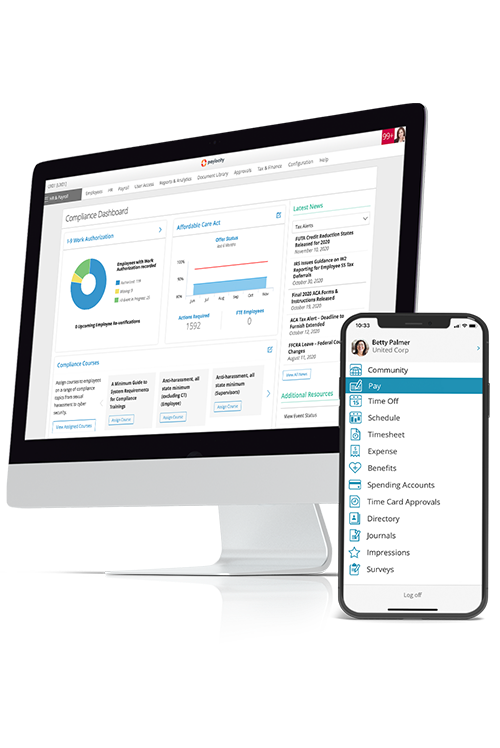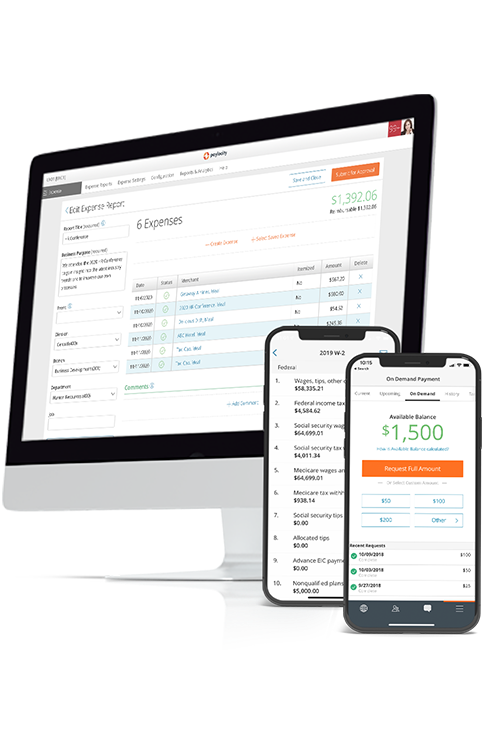Related Learning

HCM vs. HRIS vs. HRMS: What Are the Differences?
Trying to pin down the definitions of HCM vs. HRIS vs. HRMS can feel like playing three-card monte. The truth is sometimes obscured by a little razzle-dazzle.
When selecting HR technology, it’s important to understand the similarities and differences between these three types of solutions: Human Capital Management (HCM), Human Resources Information System (HRIS), and Human Resource Management System (HRMS). While the terms may seem interchangeable, technology vendors sometimes use them to refer to a specific set of functions or features.
Every HR software solution comes with at least a few bells and whistles. Key to finding the best fit for your company is knowing not only what the technology does but also what it doesn’t do. If you’re leading the selection process, make sure your planning committee, stakeholders, and vendors are all using the terminology consistently — before you get to the evaluation stage.
Because, as you begin comparing HR technology, you’ll probably come across all these terms. And while they can overlap, there are nuances to look for throughout the selection process.
Key Takeaways
- Human Capital Management (HCM), Human Resources Information System (HRIS), and Human Resource Management System (HRMS) are three types of HR technology solutions.
- Originally, an HRIS addressed core administrative HR tasks, whereas an HRMS included talent management functionality. However, modern day HRIS and HRMS have the same features.
- HCM software is the most comprehensive. It includes the same features as an HRIS or HRMS, but also offers strategic support for each stage of the employee lifecycle.
What Is the Difference Between HRIS, HRMS, and HCM?
One way to think about these terms is chronologically. As workforce needs have evolved, especially over the last few years, technology has advanced to meet those needs. Where an HRIS was once cutting edge, now an HCM solution refers to a more modern suite of software. HRMS is somewhere in between.
The other way to tell the difference between HRIS, HRMS, and HCM is by looking at functionality.
A Human Resource Information System (HRIS) is generally the starting point. This core administrative system leverages technology to make storing and retrieving employee information easier. Typically, HRIS covers the bases like benefits and compliance data, but payroll may be handled through a separate system that is integrated with your HR software.
A Human Resources Management System (HRMS) was originally intended to address talent management gaps in existing HRIS packages, like onboarding, career development, and learning management. Over time, HRIS platforms expanded to include many of these functions, so the line between an HRIS and an HRMS has blurred. Today, there’s not much difference between the two systems, but there’s a good chance your IT stakeholder is more familiar with the term HRIS, even though that’s the older acronym.
Human Capital Management (HCM) is a more comprehensive approach that brings together best HR practices and the technology to facilitate them. In addition to providing the same functionality as an HRIS or HRMS, an HCM solution also offers strategic support across the entire employee lifecycle.
The Benefits of HCM Compared to HRMS or HRIS
There are several features of an HCM solution that set it apart from HRIS and HRMS. That doesn’t necessarily make HCM the right solution for your company. It really depends on the business outcomes you need to achieve.
The differentiating components of an HCM solution are:
- A flexible, end-to-end platform. Delivered on the cloud through a software-as-a-service (SaaS) license agreement, a modern HCM solution is more comprehensive, easier to scale, and more cost-effective than legacy systems.
- A single employee system of record. This is the foundation of an integrated solution. It powers the complete employee lifecycle, from hire to retire.
- Broad functionality. Not only does an HCM automate and streamline core processes like payroll, personnel management, and benefits administration, it also supports talent and workforce management strategies with recruiting, onboarding, learning, time and expense management, and compensation.
- Tools to create meaningful employee experiences. These tools are designed to help employees feel connected through video, chat, peer recognition, surveys, and self-service options.
- Reporting and analytics. A complete HCM solution connects data to business goals, like time and cost savings, turnover trends, and diversity and inclusion initiatives. Advanced analytics like Paylocity’s Modern Workforce Index use peer benchmarks and artificial intelligence (AI) to offer prescriptive recommendations.
According to TechTarget, companies today are looking for a technology solution that not only serves the HR department but also the needs of all employees. Because workforce dynamics continue to shift, HR practitioners and executives alike want to invest in a system that can adjust and grow with the company.
See for Yourself. Take a Quick Tour of Paylocity.
How to Choose an HCM, HRMS, or HRIS Solution
How you go about choosing the right HR technology solution for your company starts with knowing what you want to do. Or perhaps more to the point, what are you unable to do with your current system?
Because your process will be unique, we won’t outline every step here in detail. (You might check out SHRM’s in-depth framework for additional guidance.) But we’re happy to offer a few insider tips from our perspective, which — not to brag — comes from working with more than 33,000 clients.
Step 1: Define Challenges, Needs, and Goals
Define your goals from three points of view: your HR department, your stakeholders, and your employees. Ultimately, you will need buy-in from all of them to be successful when transitioning to a new or upgraded system.
The more specific and measurable your goals are, the better. Look at vendor case studies for inspiration. We recommend:
- Mountainside Fitness saved 900 hours per year by streamlining their onboarding process, which gives the HR team more time to connect with new hires.
- Using data insights, Listerhill Credit Union saved $210K per year by adjusting branch schedules and was subsequently able to hire one new full-time HR team member.
- Revere Plastics decreased turnover by 70% by leveraging Paylocity’s social communication tools to improve the employee experience.
These are just a few examples of goals that an HR technology solution can help you achieve.
Step 2: Get Buy-In for HR Technology
Before you ask the executive team to sign off on a major purchase, you’ll need to do your research and get buy-in from several stakeholders along the way.
Here are four ways to build a rock-solid case for new HR technology:
- Stay focused on business outcomes: How are those outcomes tied to your workforce and where are the pain points? For example, do you need to recruit top talent faster or are you struggling to keep the in-house expertise you already have? Where could you save costs by automating workflows and documents? How do diversity and inclusion spark the innovation your company needs to be competitive?
- Get input from others: If you have an HR team, ask them to help you narrow your initial search for options. Even if you’re a team of one, talk to colleagues at other companies, read client reviews on websites like G2 and Capterra, check out social media, and talk to vendors at conferences. You might even consider hiring an HR consultant, who can also help you define requirements and write a request for proposal (RFP).
- Form the ultimate cross-functional planning committee: This group of experts will ensure that your evaluation of HR solutions and vendors aligns with your company’s requirements and goals. It will likely be a combination of stakeholders in finance, IT, core HR, talent acquisition, talent management, workforce management, benefits administration, DEIA (diversity, equity, inclusion, and accessibility), and any other areas that will utilize the solution to achieve desired outcomes.
- Calculate return on investment (ROI): Although not anyone’s favorite thing to do, estimating ROI is essential for getting final buy-in. Online calculators can help you with a rough estimate, but you probably want to enlist your finance team as well. They can help you assign dollar amounts that demonstrate how an investment in HR technology will pay off in the long run.
Step 3: See the Solutions in Action
With your executive team on board and your planning committee by your side, it’s time to compare your shortlist of potential solutions with live demonstrations. Whether your organization uses a formal RFP process or not, share your requirements with the vendors beforehand so they can tailor their presentations and show you the most relevant features. Ask questions and ask for client references.
Step 4: Evaluate and Select a Vendor
Prior to the demos, create a scorecard for your evaluation committee so that everyone is working from the same criteria. The rating system you use should reflect your priorities, but be sure to consider these factors:
- Functionality
- Security
- Reliability
- Ease of implementation
- Service
- Cost
Is Paylocity an HRIS, HRMS, or HCM Solution?
Yes! Because Paylocity is an HCM solution, it encompasses the functionalities of HRIS and HRMS as well.
HR Technology Categories

Paylocity’s Modern All-in-One Platform

What Can You Expect From HR Technology in the Future?
It’s really the “C” that makes HCM different — a more holistic approach of investing in human capital to galvanize innovation, improve productivity, and increase profitability.
As workforce dynamics continue to evolve, HCM will expand on emerging technologies like artificial intelligence (AI), machine learning, and natural language processing (NLP). Chatbots to connect with potential candidates in real time, analyzing resumes and video interviews for transferable skills, and predicting employee burnout are just a few ways companies are tapping into these technologies.
And while these bells and whistles are pretty awesome, make sure they serve your purpose: To spend more time with people and a lot less time with paperwork.
Now, could we show you a demo of the most complete platform for the modern workforce?



